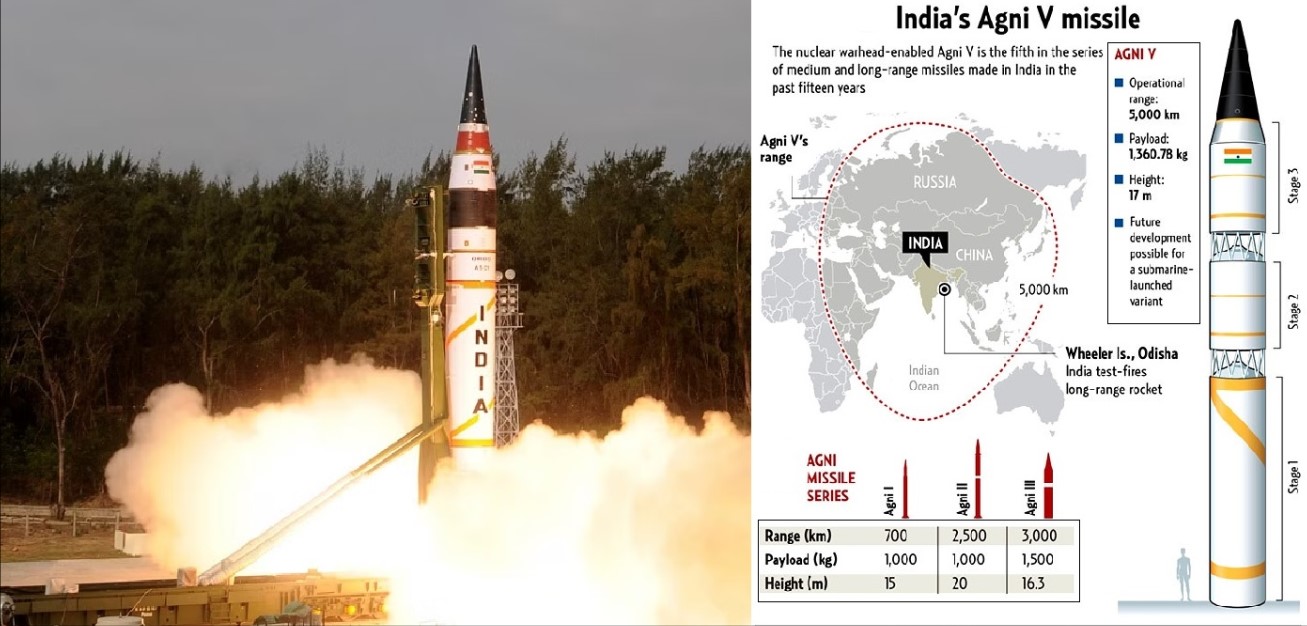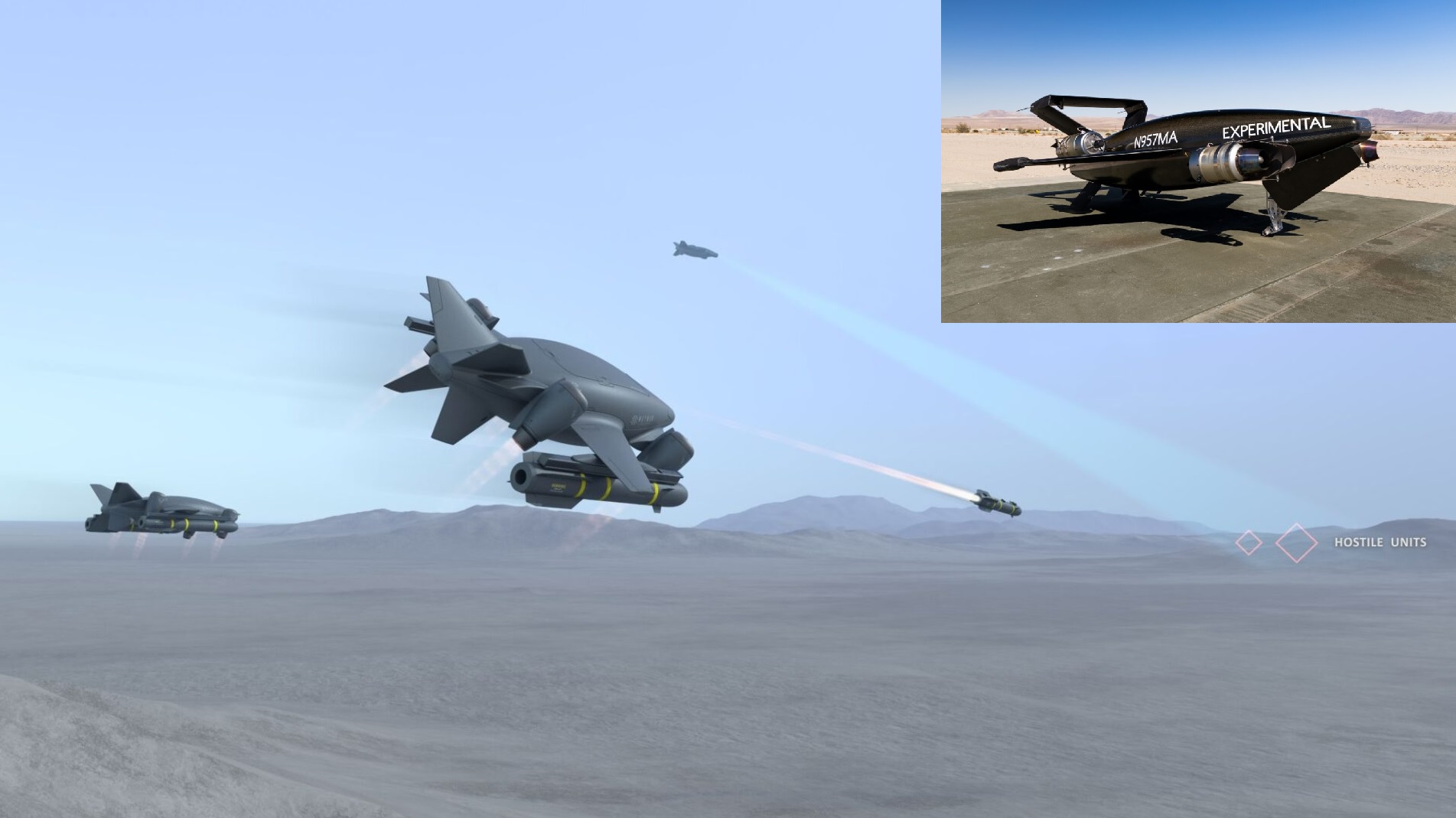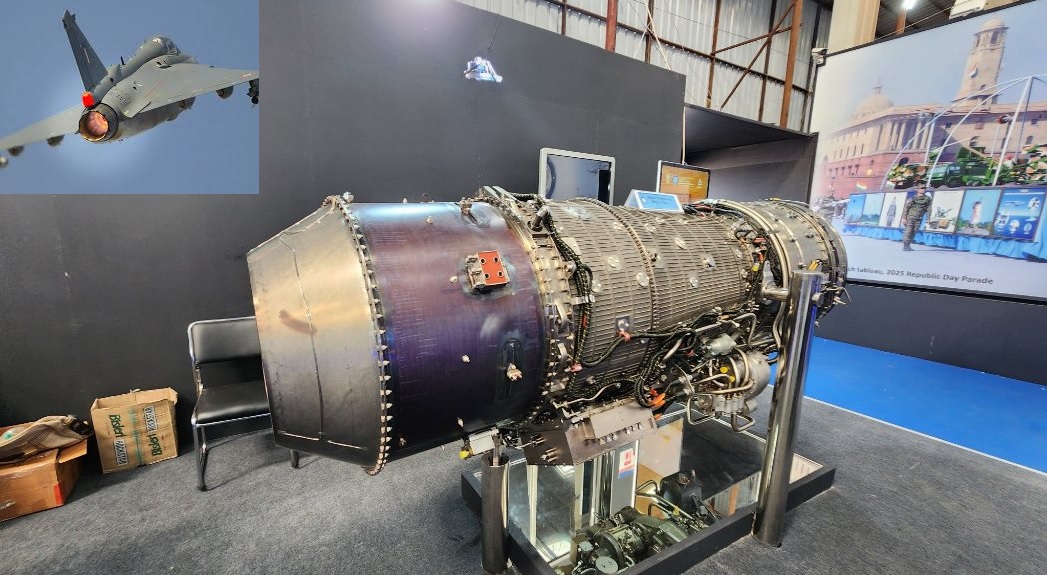Agni-5 MIRV Capablity Ballistic Missile of Agni Series Missile

Agni Missile ,India :- India's remarkable Agni-V missile, armed with nuclear capabilities, stands as a symbol of scientific achievement. Developed by India's Defence Research and Development Organisation (DRDO), this missile utilizes a three-stage solid-fuel engine, showcasing India's commitment to advancing missile technology. Let's delve into the journey of Agni-V, starting from its inception in the early 1980s under the visionary leadership of scientist and former President Dr A P J Abdul Kalam.
The History of Agni Missiles:
The story of Agni missiles began in the early 1980s as part of the Integrated Guided Missile Development Programme. Dr A P J Abdul Kalam, a central figure in India's missile and space programs, spearheaded this initiative. The goal was to develop a series of missiles with different capabilities, laying the foundation for India's missile prowess.
Agni Series Missile :-
1. Agni I: 700-800 km
2. Agni II: Over 2,000 km
3. Agni III: Over 2,500 km
4. Agni IV: Over 3,500 km, deployable from a road mobile launcher
5. Agni V: Over 5,000 km, with some sources claiming up to 8,000 km
6. Agni VI: Under Development (Range 10,000 to 12,000 kilometres)
In June 2021, DRDO successfully tested Agni P, a canisterized missile with a range capability between 1,000 and 2,000 km. This innovation allows for launch from road and rail platforms, enhancing deployment speed. Additionally, the development of Agni-6, with a range starting at 8,000 km, is underway, showcasing India's continuous efforts in advancing missile technology.
Agni-V Specifications :
The Agni-V, named after the Hindu god of fire, boasts impressive specifications:
- Range: Over 5,000 km (with potential sources suggesting up to 8,000 km)
- Length: 17.5 meters
- Diameter: 2 meters
- Launch weight: 50,000 kg
- Payload: 1,100 kg
- Propulsion: Three-stage solid-fueled engine
- Guidance: Ring laser gyroscope inertial navigation system, optionally augmented by GPS/NavIC satellite guidance
- Speed: Mach 25 (30,600 km/h; 19,000 mph; 8.51 km/s) in terminal phase
- Warhead: Strategic nuclear weapon with 10-12 Multiple Independently Targetable Reentry Vehicles (MIRVs)
MIRV Capability Explained:
Agni-V's unique feature is its ability to carry Multiple Independently Targetable Reentry Vehicles (MIRVs). Each missile can carry 2–10 separate nuclear warheads, providing flexibility in target assignment. MIRVs ensure a credible second-strike capability, even with a limited number of missiles. According to DRDO sources, a MIRV payload would be significantly heavier, with each warhead weighing about 400 kilograms. This means a 5-warhead MIRV would weigh two tonnes.
Developmental Test :
1. First Test Launch (April 19, 2012):
- Launched from Abdul Kalam Island using a rail mobile launcher.
- Flew for 20 minutes, successfully hitting a target over 5,000 km away in the Indian Ocean.
2. Second Test Launch (September 15, 2013):
- Launched from a mobile launcher off the Odisha coast.
- Flew for a little over 20 minutes, hitting a target in the Indian Ocean with impressive accuracy.
3. Third Test Launch (January 31, 2015):
- Used a canisterized version mounted over a Tatra truck.
- Witnessed a flawless 'auto launch,' with detailed results awaited.
4. Fourth Test Launch (December 26, 2016):
- Successfully conducted from Abdul Kalam Island using a canister.
- Paved the way for user trials by the Strategic Forces Command (SFC).
5. Fifth Test Launch (January 18, 2018):
- Third consecutive canisterized test on a road mobile launcher.
- Covered a distance of 4,900 km in 19 minutes.
6. Sixth Test Launch (June 3, 2018):
- Precision launch with successful tracking by radars and telemetry stations.
7. Seventh Test Launch (December 10, 2018):
- Test-fired in a lofted trajectory for the first time.
- Covered nearly 2,041 km, completing pre-induction trials.
User Trials Explained:
As part of user trials, Agni-V was successfully launched on October 27, 2021, and December 15, 2022, from Abdul Kalam Island, Odisha. These trials align with India's credible minimum deterrence policy, emphasizing a commitment to 'No First Use.'
Night Trial's Mystery Unveiled (December 15, 2022):
The first night trial of Agni-V marked a significant milestone. Conducted by the Strategic Forces Command (SFC), the test aimed to validate new technologies and equipment on the missile. Using lightweight composite materials made Agni-V 20 percent lighter, enhancing its striking capability beyond 7,000 km. The night test, visible in many parts of India and neighboring countries, Look Like hypersonic Glide Vehicle.
The inclusion of a Hypersonic glide vehicle in the test, suggested by some observers due to the low velocity of the projectile, remained unconfirmed by authorities. Speculation arose that the test might not be exclusively related to Agni-5 but potentially involved a more significant development in missile technology.
Agni-V's Impact and Significance:
India's Agni-V missile is hailed as a significant technological achievement, earning the title of a "game-changer" for the country's strategic deterrence capabilities. Comparable to advanced ICBMs possessed by other major powers, Agni-V places India among the elite in missile technology. While some specifications remain classified due to its military nature, the information derived from publicly available sources highlights the Agni-V's pivotal role in ensuring India's national security.
The Agni-V missile stands tall as a symbol of India's technological prowess and commitment to national defense. Its journey, from conception to successful test launches, signifies a crucial milestone in India's pursuit of self-reliance in defense technology. As geopolitical landscapes evolve, the Agni-V positions India as a formidable player in the global arena, contributing to the balance of power in the region.



